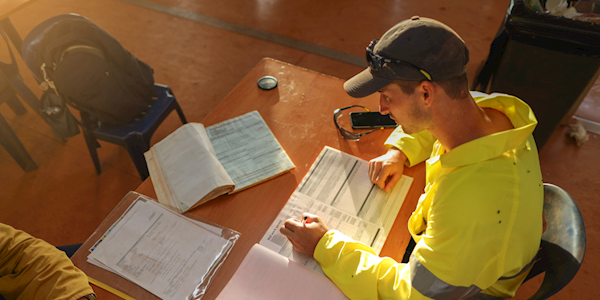
Workplace incidents, such as those causing injury, property damage and/or financial loss are by their nature unexpected. Even 'near miss' incidents that don't result in loss have the potential to do so. But businesses can be prepared to respond in a way that helps prevent future incidents, by having an investigation procedure in place. Acting to establish the factors contributing to and causing an event can improve workplace safety.
Ideally, safety programs focus on preventing workplace incidents, but if one occurs it's valuable to have an incident investigation procedure in place, and your employees trained in how to use it.
How to structure a workplace incident investigation procedure
A key to the process is allocating responsibility for conducting the investigation. A supervisor in the affected area is usually the best person because they are most familiar with the tools, equipment and people involved. In some cases experts in equipment, outside agencies and other technical resources may also be needed.
- The first step in the investigative process is to secure the scene and, if necessary, put any equipment involved out of service.
- Record visual evidence of the incident by taking photos or videoing the scene.
- Interview victims and witnesses, asking them to describe what happened. These accounts may differ, especially if the victim is in shock.
- Document evidence and records, including the investigator's own observations.
- Identify the contributing factors to determine the incident root cause.
- Document the recommended corrective actions that address the cause, the people assigned to complete them and a due date for completion.
How to conduct an effective incident investigation: remain neutral
All incidents and injuries should be investigated as standard practice. The severity of the incident should determine the extent of the investigation but the end goal is to identify problems, solve them, improve your safety programs and prevent future occurrences.
When interviewing victims and others involved in the incident adhering strictly to fact finding in a neutral, non-confrontational manner helps pinpoint the attitudes, behaviours and other factors that led to the problem.
Analysing the facts presented and asking a neutral 'why' question helps the investigator define the root cause of the incident. For example, if employee error caused the incident, dig further to determine why the employee made the error.
Avoid assigning blame, punishing or exonerating workers and managers; this approach isn't helpful or conducive to establishing key facts. Conducting a tick-box exercise to satisfy paperwork requirements is also unlikely to be productive, instead eroding confidence in the system.
Always keep in mind that the ultimate goal is to prevent recurrence, any further injury or damage and to reduce business losses.
How Gallagher can help with your business's workplace health and safety
Gallagher Workplace Risk management specialists provide workplace risk advisory services to clients through our dedicated team of consultants. We assist clients in safety and risk advisory, workers compensation, injury management and training and education via our locally focused but nationally resourced team of experts.

